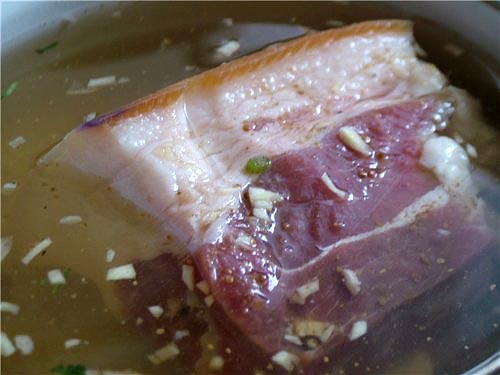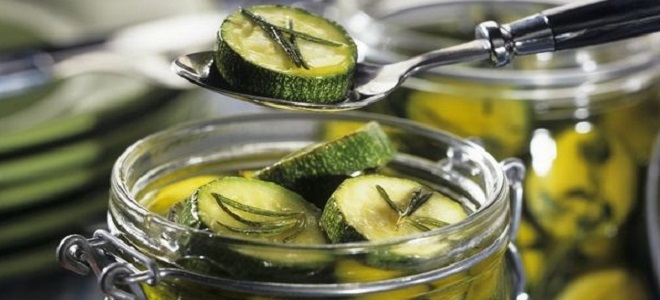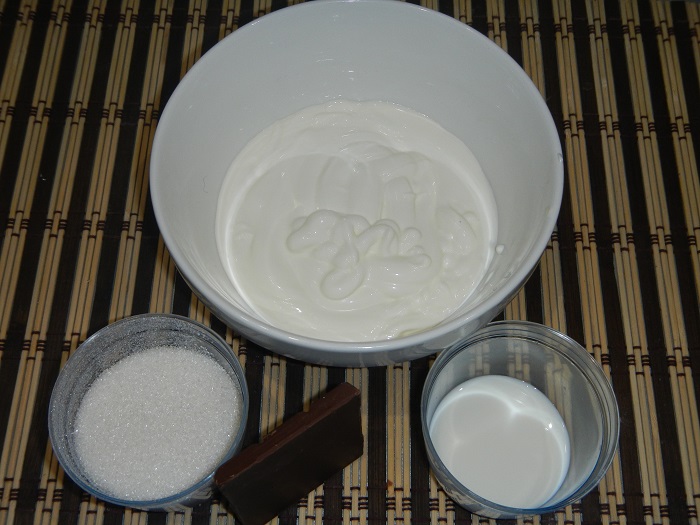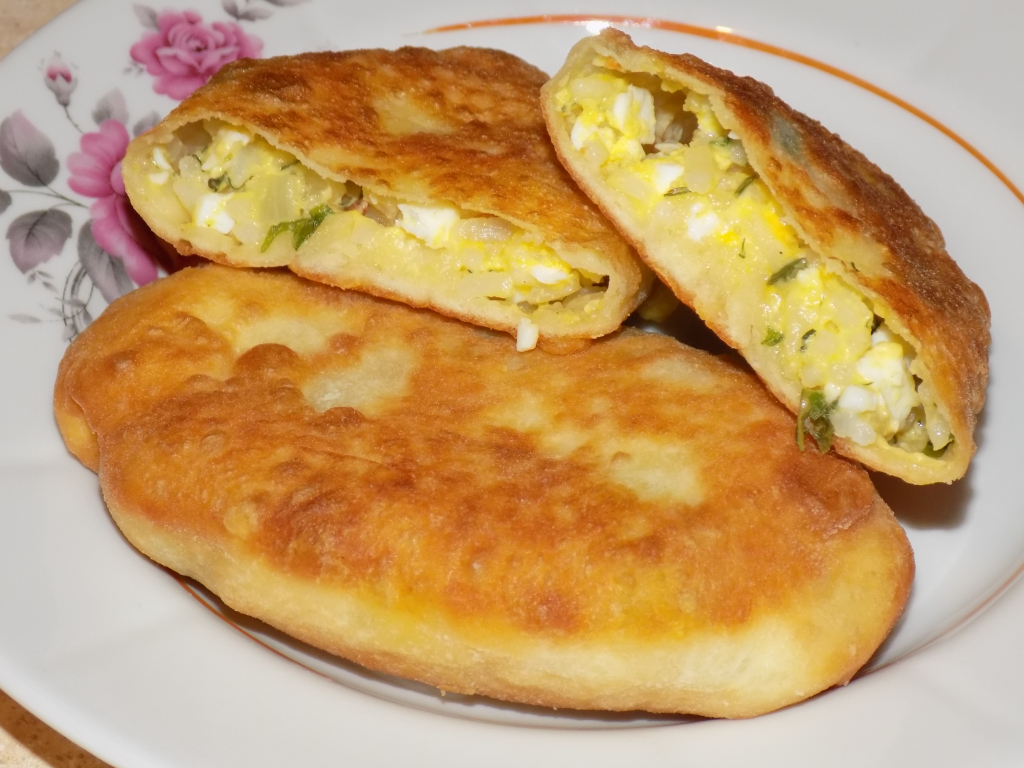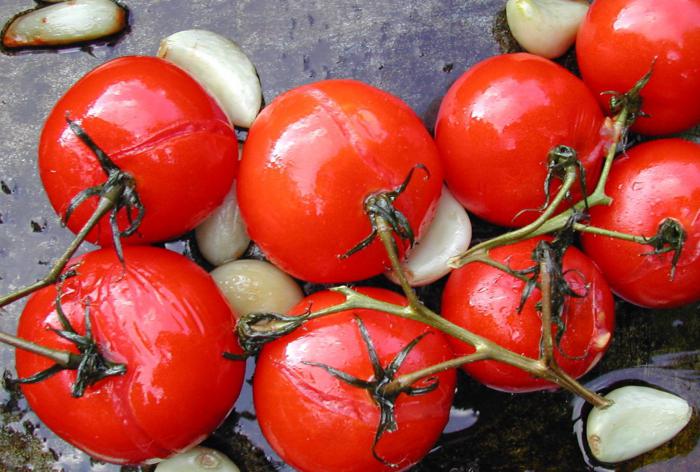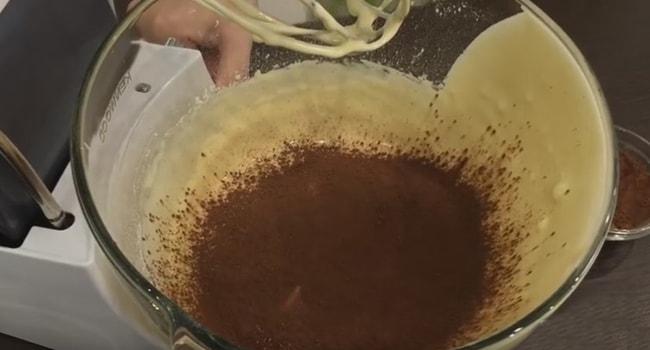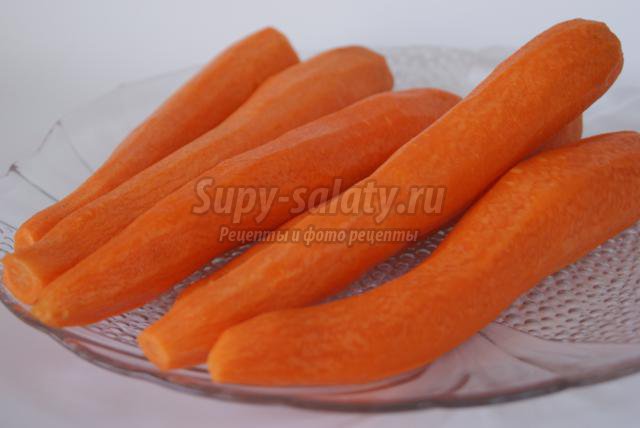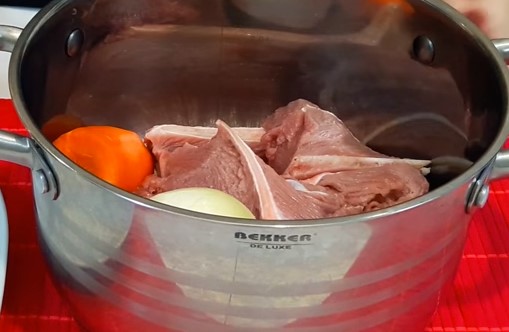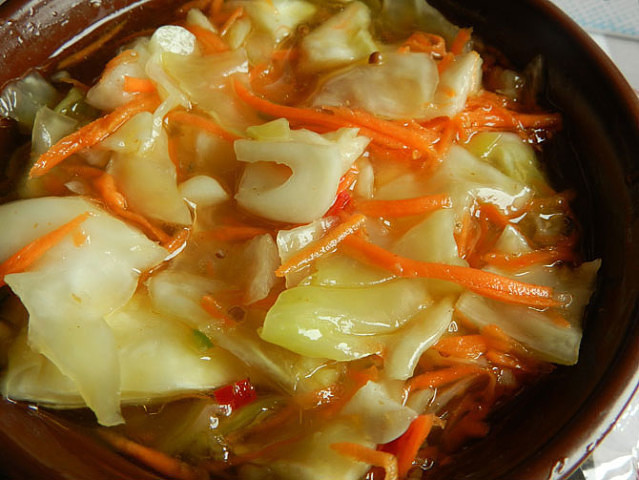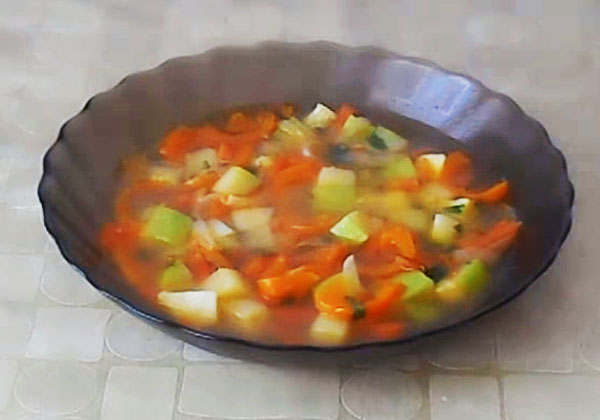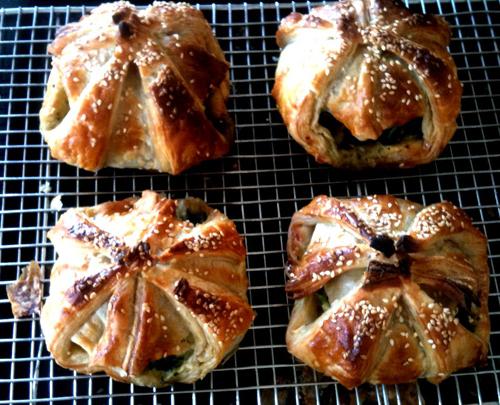How much wheat is needed on the flask of mash. Classic recipe: yeast mash
Dear friends, experienced distillers know that moonshine from cereals is obtained much better than from the usual mash on sugar and yeast. Although the process of preparing raw materials takes more time, the final result is worth it. Depending on the choice of starting materials, alcohol with different taste characteristics is obtained. Today we will analyzewheat moonshine, the composition of the mash recipe and the characteristics of the distillation of the product.
Moonshine from wheat It turns out soft and tasty. In Soviet times, such a drink was in high demand. This was due not so much to quality as to the availability of ingredients. Nevertheless, the taste characteristics of strong alcohol will appeal to many.
Before you start studying the recipe and preparing for the preparation of the mash, you should choose the right grain. It is important to understand that for delicious moonshine only a high-quality grain product is required. In no case should stale, dirty and musty wheat enter the vat with prepared wort.
Moonshine grains must be dry, clean, free from pests and diaper rash. Before applying the grain for the intended purpose, the grain must be sieved, freeing from dust, excess impurities, husks and other unnecessary substances. It is important to make sure that the wheat is not only harvested, but has been in stock for at least 2 months, that is, it has matured and dried out. At the same time, the grain must be alive and have the ability to sprout, otherwise the mash will not work.
Moonshine from wheat: current recipes
Today there are several options for making mash for wheat moonshine. Among them are yeast and yeast-free. We will not ignore any of them.
Classic recipe
This method is the most common, therefore, has every right to claim the title of classic. The quantity and list of ingredients is as follows:
- wheat - 2.5 kg;
- water - 25 liters;
- granulated sugar - 6 kg;
- pressed yeast - 0.5 kg, dry - 100 g;
- fermented baked milk - 0.5 liters.
How to choose a suitable grain has been said above, all recommendations must be followed.
Malt preparation
The first step in the process of preparing high-quality wheat moonshine will be the preparation of malt. To do this, choose a container like baking sheets, flat and wide. Cereals are laid out on it with a layer of no more than 2 centimeters and poured with warm water. There should be little water so that it barely hides the grains. We leave the wheat for several days in a warm and dark place. It is necessary that the grain sprouts.

The first sprouts appear on the third, maximum fourth day after soaking. If this does not happen, then the grains selected for moonshine are of poor quality and you will have to repeat the procedure with other raw materials. While the cereal germinates, it is necessary to regularly turn the wheat over to prevent mold. It is important not to damage the sprouts. It is necessary to wait for them to sprout by 1.5-2 centimeters and begin to weave, this is a signal for the fact that it is time to remove the grain from the water and proceed to the next stage.
Cooking Mash
The next step is to cook the mash. Based on the number of components, you will need a capacity of at least 40 liters. It is important that this was glassware, stainless steel and other material that does not react with alcohol and does not oxidize, otherwise the tastewheat moonshine will be spoiled.
Water is poured into the tank, preheating it to a temperature of not more than 60 degrees. Sugar is poured into it and thoroughly mixed until completely dissolved. Once the liquid has cooled to a temperature of 30 degrees, you can pour sprouted wheat and diluted yeast into it. If the water at this point is hot, the yeast will die and fermentation will not start.

Braga is mixed and closed with a water lock, you can use a medical glove with a puncture on your finger. We put Braga in a dark warm place (ambient temperature not less than 20 degrees) and wait until the end of fermentation. The glove will fall off, and the mash will become bitter and precipitate, usually the process takes two weeks.
Stage Three: Distillation
Before placing the mash in the distiller, you need to strain it and remove the used grain. It is worth noting that malt can be used several more times, this will not spoil the taste of alcohol. Mix the mash with fermented baked milk or kefir to separate and adsorb fusel oils. As soon as the dairy product coagulates and precipitates, the mash is drained and placed in.

It is enough to overtake the mash only once. During the initial distillation, immediately it is necessary to separate the fractions and select only the “body” of moonshine. Once the strength of the dispensed alcohol drops below 35 degrees, the distillation process can be completed. After that it costs additionally in any convenient way. You can dilute the resulting alcohol to 20 degrees and re-distill to further increase its quality.
The resulting moonshine is diluted with water to the desired strength and sent to rest for at least 2-3 days. About 6 liters of the finished product are obtained from these ingredients.
Yeast-free recipe
This cooking optionwheat moonshineno less popular than the previous one. This allows you to get the most natural product at the output. Without speeding up the process artificially.
Structure:
- wheat - 5 kg;
- sugar - 6.5 kg;
- water - 15 liters.
In the manner described above, you need to prepare the selected grain. That is, sift, clean from dirt, dust and husks and send to germinate. Wheat is poured with a small amount of room water and 1.5 kilograms of sugar are added there. Grain sprouts in sweet water.

As soon as the process of active growth has become noticeable, the grains are transferred to a container more suitable for the mash, the remaining sugar and water are added. And leave for another 10 days. The container must be sealed with a water lock and, if it is not possible to provide a warm room, wrap and put to the battery. After a couple of weeks, the fermentation will end, this will additionally be reported by the absence of bubbles in the hydraulic seal or a fallen glove. Braga will also lose its sweet taste and brighten.
We filter the resulting liquid and send it to distillation. If desired, the distillation process can be repeated twice. If you don’t feel like distilling the moonshine again, you need to carefully release it from fusel oils. To do this, then strain it through a charcoal filter. For better purification of the drink, re-distillation is nevertheless recommended.
If the moonshine is too strong, then it can always be diluted with water to the desired concentration. It is important in this case to use clean, filtered water. Liquid from a water tap will not work. The initial amount of ingredients gives an output of 3-4 liters of the final product.

It is used much more often, despite the fact that raw materials, and in this regard, the cost of finished moonshine from grain, are much cheaper. This is due to the fact that the recipe is complicated and associated with the germination of grain. But it can be greatly simplified by lowering the germination stage in the production of moonshine. Mash on wheat without germination is made using the same technology as any other starch-containing raw material.
Wheat mash without germination
Why, in general, germination is necessary? To produce alcohol, yeast needs sugar or, more precisely, monosaccharides. They are present in the composition of fruits, but wheat contains starch. The latter is polysaccharides, so in order for the yeast to process it into sugar, it is necessary to break this starch. The process is called saccharification.
Saccharification is the breakdown of starch-containing raw materials: flour, cereals, potatoes and so on - to simple sugars under the action of enzymes. Enzymes can be artificial or natural in the form of malt. Just the latter are obtained during germination of grain. Without germination, the use of synthetic enzymes is necessary. Enzyme sacrifice is divided into hot and cold. The principle of separation is based on temperature and, accordingly, on the cooking time of the mash.
Hot saccharification is considered traditional, and its principle is that at first starch-containing raw materials are boiled as much as possible. Then it is exposed to enzymes at high temperature, about 60 degrees. For several hours, the mash is maintained at this temperature. During this, the enzymes break down starch into available sugars. As a result, the mash becomes sweet, it is filtered and cooled, after which yeast is launched there. Further, the fermentation process is no different from the same stage during cooking - sugar becomes alcohol.
Wheat moonshine by cold saccharification
Malt is replaced by two main enzymes - Amilosubtilin and Glukavamorin. The first is necessary for the breakdown of molecules, the second for the processing of starch into sugar. This technology is much simpler and cheaper than making malt, and the result is no different. Enzymes along with water are simply added to the raw materials at the stage of preparation of the mash. In this case, processes such as the processing of starch into sugar and the fermentation process itself occur simultaneously.
The main advantages of this method of saccharification:
- The method is pretty simple. Therefore, it is well suited for beginner distillers who do not have sufficient equipment.
- It does not require heating the raw materials to high temperatures and maintaining them for some time.
- The labor involved in making mash is significantly reduced.
Disadvantages:
- You must buy special enzymes in the store.
- Fermentation time significantly increases and can reach 20 days.
- There is also an opinion that due to the artificial origin of the enzymes, they can leave an aftertaste, although not every distillery confirms this. Nevertheless, many prefer to adhere to the recipe for making mash on natural malt and from sprouted wheat. A partial distillation helps to partially remove the taste, which, however, is already desirable.
How is cold saccharification made:
- An initial starch-containing raw material is added to the fermentation tank. It can be cereals, flour, starch and even pasta. Further, all this is filled with water at a temperature at which fermentation is most effective, that is, about 30 degrees. Water is taken at the rate of three to four liters per kg of feedstock. Enzymes are added at three to five grams per kg, and yeast - at five grams per kilogram, when it comes to dry. Pressed bakery - it will be necessary five times more. It is very important not to fill the container by more than 3/4, as a lot of foam can form during the process of active fermentation.
- All this is mixed, covered with a water lock and put in a warm and dark place, if possible, use a thermostat. It is important that the temperature does not fall below 18 degrees, otherwise the fermentation process may stop.
- The fermentation process itself begins in a few hours and continues in the active mode for the first few days. Then the intensity decreases. It is impossible to allow a thin film to form on the surface - this is a sign of souring of the mash, in which case it must be urgently surpassed.
- Ready mash is removed from the sediment and distilled. In this case, clarification with bentonite may not lead to the desired effect.
Depending on the recipe and the need, other ingredients can be added to the mash: top dressing for faster fermentation, antibiotics to reduce the risk of souring, acid stabilizers, antifoam agents and so on. The manufacturer usually indicates the required dose of enzymes on the package, since their activity may vary, this must also be taken into account.
Basic rules for using enzymes:
- Before loading, the container must be carefully processed using potassium permanganate or detergents with the effect of disinfection. And also it must be thoroughly dried, otherwise everything may disappear.
- Access to oxygen will definitely ruin the product, so the use of a water seal is highly desirable.
- When preparing wine, pasteurization is required. It will be necessary to heat up to 80 degrees.
Japanese koji yeast
Many experienced distilleries have heard of this type of yeast, which is widely used in Asian countries to obtain alcoholic beverages from starch-containing raw materials. These yeasts are made on the basis of molds, which saccharify starch, so they do not require wheat germination and the use of enzymes. Not so long ago, such Chinese-made yeast appeared on our market, which provoked serious excitement. We offer to understand the advantages and disadvantages of this type of saccharification, as well as the technology of making mash.
Real Japanese koji are a finished product of steamed and fermented rice with a special fungus. In the process of preparing koji, special conditions are created:
- First, the raw material is prepared, that is, the rice is washed and soaked.
- Next, steam is used to process the grain, after which fungal spores are introduced into it. This is done only after it cools down. Disputes need to be purchased only from trusted suppliers, for example, in Japan, only 10 companies can officially trade them.
- Rice is poured into a wooden container and transferred for saccharification under controlled temperature.
- In the process, it is periodically mixed, the temperature is controlled, cooled or heated as necessary.
- Ready rice is covered with white cereal. It must immediately be used, since it has a very short shelf life. Interestingly, his purpose is not only in obtaining alcohol. Often it can be used as a marinade for dishes, for example, from fish, for making soy sauce.
From this we can conclude that it is possible to buy only spores of fungi, which subsequently will need to also be activated using steamed rice, and propagated, observing a certain temperature regime. It’s not possible to just buy them in Japan and transport them or order them by courier, since special permission from the sanitary services is required for transportation across the border.
What is really being sold under the guise of this yeast in Russia? The basis of koji made in China is a certain substrate, which consists of enzymes that break down starch. For example, amylase is present in many of them. Thus, koji from China is a mixture of dried rice stillage, artificial enzymes used in cold saccharification technology, and ordinary yeast. And also they can add special additives for more active fermentation. The mold itself, which is used to process rice, is dangerous for health, therefore it is killed at the production stage, and real koji cannot be grown from such a mixture.
Despite the fact that they themselves are not components that koji is understood to be, their use in some cases can be quite justified. Further, by this word we will mean precisely a substitute for enzymes, and not real Japanese koji, which are fungal spores.
The advantages of such an enzyme substitute:
- Ease of working with raw materials that contain starch. It does not require boiling, adding enzymes or malt, germinating grain and so on. Everything you need is already included in the bag with yeast, just add water.
- With the right technology, the distillate will have the same raw material properties as when using malt.
- Ready-made wheat mash does not burn out, even if you do not use a steam generator.
- The percentage of starch that is processed into sugar is quite high, which allows you to get the maximum amount of moonshine.
Disadvantages:
- the average fermentation time is about 25 days, which is significantly longer than with conventional saccharification by malt and even when using enzymes;
- fermentation causes the appearance of an unpleasant musty smell;
- the cost is significantly higher than ordinary yeast.
Very important: although the technology involves the complete destruction of active spores of the fungus at the stage before packaging, it is nevertheless recommended to observe safety precautions, since some of them can still be preserved. Yeast should only be worn with gloves and a respirator. If they get into the lungs, they can cause asthma or an allergic reaction. You can’t taste the mash!
Moonshine made from wheat using koji:
You need to take five kg of wheat in the form of flour or cereal, 20 l of water and 45 g of koji. In this case, starch can be used instead of cereals or flour. The instruction states that the ratio of water to raw materials should be 4 to 1, but it is better to do more, since in this case the duration of fermentation will be less. The optimal amount of koji is nine grams per kg of flour, which was established through experimentation. - about 15%. The yield depends on the starch content.
Moonshine can also be made from wheat using technology where grain should not be sprouted. Mash with the addition of malt can also be attributed to this category of processing, although the principle by which the mash is prepared in this case is the same as for germination. The use of enzymes has its advantages and disadvantages, everyone chooses for themselves a more convenient way. The main thing is not to forget to observe the technology exactly.
We offer to surprise guests with wheat moonshine you have personally prepared - a drink that harmoniously combines natural taste, quality and strength. We will take a closer look at how mash on wheat without yeast is obtained at home.
It became urgent to drive moonshine without the use of yeast, for this they are replaced with cereal malt obtained from germinated wheat, so that the fermentation process starts, the main thing is to approach the preparation of ingredients responsibly.
For germination, it is necessary to select good-quality wheat grains so that they do not have wormholes, signs of diaper rash, an unpleasant odor, that is, the wheat must be of high quality, then wheat mash without yeast for moonshine will have an excellent taste.
It is important that at this stage we prepare quality raw materials. Then the wheat mash for moonshine will be of high quality.
Grandfather's method of cooking mash
A recipe that has been used by several generations of moonshiners and allows you to get a good product at the output:
- Rinse 10 kg of wheat with water several times;
- Fill in the tank;
- Pour water five centimeters above the level of raw materials.
The technology in which wheat swells takes 2-3 days. Then, dilute 3 kg of sugar in warm water with a volume of 15 liters, be sure to mix thoroughly so that the sugar dissolves, pour the mixture into a container, leave it under a water seal. It should be noted that the fermentation temperature should be from 22 to 24 degrees. As soon as the fermentation process is over, dilute another 3 kg of sugar in 5 liters of warm water and pour into the mash, leave it under a water lock. After fermentation, the mash has a golden color, smells of bread, and it itself is bitter in taste, while the grain settles to the bottom. Everything, the fermentation process is over, we merge through the net (so that the grain remains in the tank) and distill.
And in the tank (we have grain left in the tank), we pour in the diluted sugar in water (6 kg of sugar per 20 liters of water). And this can be done 4 times, but at the same time, the fermentation period is increased by 3 days each time. Also during the second distillation the bread smell disappears.
The yield of moonshine in compliance with this proportion is 7 liters., The strength is 50 degrees.
Homemade drink recipe
The recipe for wheat mash for moonshine contains the following ingredients:
- 5 kg wheat grains;
- 7 kg Sahara;
- The required volume of water is 15 liters.
We mix the ingredients, fill it with water, mix everything thoroughly, pour it into glass jars and move it to a warm place for 4 days. If possible, it is convenient to use special containers with a water lock, which can be purchased or made independently. If glass jars are used, a rubber glove is a good tool to effectively monitor fermentation, they pull it on the jar, after making a puncture in place of the finger.
We wait until the mash comes up and ripens, it will take us 4 days. How to make mash of wheat for moonshine, we have examined, now you can go to the distillation of moonshine.
Wheat Sourdough Recipe
How to make wheat mash for moonshine with the phased addition of ingredients, we will consider in this recipe. First, prepare the leaven:
- We wash 1 kilogram of grains and fill with water so that it is 5 cm higher than the level of wheat.
- Do not disturb during the day;
- Then add 0.5 kg. sugar, mix;
- We send raw materials for 10 days to a warm place.
The resulting sourdough can be poured into a bottle or another container, add another 3 kg. sugar and 3 kg. wheat, fill everything with warm water, leave for 7 days, after which you can brew moonshine.
Dried Wheat Beverage Recipe
Cereal mash on wheat is also prepared using this recipe:
- grains are dried in the oven;
- crushed to the consistency of flour;
- add sugar;
- mix the ingredients;
- fill with water.
The ratio of composition to the mash:
- 5 kg wheat grains;
- 7 kg Sahara;
- the required volume of water is 15 l;
- Fermentation technology takes 4 days, the raw materials for this are also put in a warm place.
The formed mash is distilled in the same way as in the preparation of moonshine, in a classic way.
To achieve the maximum result: improve quality, eliminate taste, improve transparency, it is recommended to use either.
Activated carbon purification technologies, there are several types:
In the first case, pound 12 grams (the proportion is relevant for one liter of liquid) of activated carbon and pour on gauze, laid several times. Pass our fluid through this homemade filter a couple of times.
In the second - place the coal in a container with moonshine (the proportion is the same as in the first case). This method is quite long, since it takes 12 days to wait (shake every 2 days), then be sure to skip through gauze and cotton wool. A few more days you need to defend, pass the infused drink through our homemade gauze filter. This type of cleaning is long, but allows you to achieve the best result.
Some tips for choosing wheat grain: wheat should be of the highest grade, not last year, because maybe at the initial stage of the debate, although, depending on the conditions under which it was stored. Grain should not be treated with chemicals, which is often done by agricultural producers, because it is highly likely that the wheat will become acidic, to avoid this, wash the grain well.
Thus, we learned that making mash from wheat is not a complicated process, but rather laborious, but it allows independent preparation of a high-quality alcoholic beverage without impurities and all kinds of additives. This means that there is minimal risk of exposure to the body of preservatives and chemical additives in an alcoholic drink.
Methods for making mash without yeast is becoming increasingly popular, because it allows you to make a natural pure product that is not only quality but also taste. But what recipe to choose - it's up to you!
Many residents of our country, like the honorable Darya Petrovna, the cook of Professor Preobrazhensky from Mikhail Bulgakov’s eternally relevant novel “The Heart of a Dog,” themselves make excellent vodka. Different technologies are used in this centuries-old tradition. Consider one of them when using wheat mash without yeast for moonshine.
Moonshining: general aspects
Everyone watched the movie "Moonshiners." The moral of that time is still relevant today, but in the case of preparing a product for personal consumption in order to surprise and delight guests at the festive table with homemade vodka, tincture or liquor, this is quite acceptable and even to some extent prestigious.
The centuries-old tradition of making home-made vodka has enriched and diversified the complex technological process, which can be briefly represented as follows:
- Harvesting and selection of raw materials.
- Stage of fermentation.
- Stage distillation.
- "Rectification" is a product purification procedure.
- “Improvement” is the final stage of fine cleaning and introducing the desired taste, aromatic and color qualities into the product.
In our case, it is necessary to build the process of preparing the desired product with changes to the fermentation stage. It consists in the manufacture of moonshine from mash on wheat without the use of yeast. The use of wheat and the rejection of the additional introduction of yeast in the manufacture of mash contribute to increasing the quality of the final product.
Due to the lack of unnecessary components at the stage of fermentation, moonshine from cereals is obtained of excellent quality and is distinguished by its soft taste, reduced amount of harmful substances.
The recipe for quality moonshine from wheat without yeast
The process of preparing raw materials plays one of the leading roles in the preparation of moonshine from germinated wheat without yeast. Good malt is the basis of a decent cereal drink. As a result of germination, the resulting enzymes accelerate the conversion of starch to sugar.

Structure:
- wheat grain - 4 kg;
- granulated sugar - 4 kg;
- drinking water - 30 l.
Cooking:
- First, we sort the grain and remove the garbage.
- Then we soak it: pour a kilogram of the selected grain with an even layer into the container and fill it with water so that the liquid is 2-3 cm above the level of wheat.
- Then cover and place in a dark place.
- After a while, sprouts and roots will appear.
- In a container with sprouted grain, add 0.5 kg of sugar and mix. If the mass is too thick, then you can add water.
- We cover the capacity, making it impossible for garbage and flies with insects to get into it, and put it in a warm place for 8-10 days.
- Once the yeast is ready, pour it into a glass bottle and add 3 kg of grain, 3.5 kg of sugar, and then fill it with water.
- We put the capacity under the water lock, thereby ensuring the removal of gases and preventing air from entering.
- We put Braga for 7 days in a room with room temperature up to 24 °.
- Upon completion of the fermentation processes, the mash is ready for further transformation into moonshine.
Gourmet Strong Home Drink

Consider another way to make moonshine from wheat and sugar without yeast:
- Using the leaven from the above recipe, prepare the mash, but somewhat faster.
- Germinated grain must be dried in the oven and grind.
- The total mass of wheat must also be crushed to flour.
- In the same proportions, mix the flour and sugar and pour water. When adding water, thorough mixing is required so that lumps do not form.
- We put the capacity in a warm place.
- The fermentation process lasts for four days.
- Ready-made mash can immediately be used for its intended purpose, but experts recommend subjecting it to a filtration and purification procedure. This will lead to a reduction in undesirable constituents in the finished product of the first distillation.
Moonshine Bread

This drink is also distinguished by its strength and exquisite taste. It’s easy to cook it:
- First of all, you need to grind 4 kg of wheat of food grades and mix with a kilogram of sugar.
- The mixture should be poured with three liters of water and left in a warm place for 5 days.
- Next, add another 5 kg of sugar and two buckets of water. We continue the insistence for about eight days.
- We control the taste of mash. So, mature mash has a bitter taste.
- Filter the ready-made mash and double-distill it.
- We add 5 kg of sugar, 8 liters of warm water to the waste and stand for up to 10 days. And then it needs to be decanted and twice surpassed.
To succeed in the complex business of home-brewing from wheat, you need to be a savvy master. One of the main requirements is respect for proportions. Of great importance is also the selection of raw materials and their preparation. A muddy and badly smelling liquid instead of the expected drink is the result of miscalculations and neglect of technology at the stages of the production of moonshine.

We replenish the piggy bank's knowledge box with some tips:
- in a long-standing Braga, the concentration of harmful impurities is high;
- finished mash does not have a sweet taste;
- the moment of its ripening should be correctly determined, since overripe mash will reduce the quality of the product, and unripe - its quantity;
- on average, 1 liter of moonshine is obtained from 1 kg of sugar;
- in the process of driving, the alcohol content in the Braga decreases, as does the amount of impurities;
- in the first stream there is a “pervak” with a large amount of harmful components - about 50 ml per 1 kg of sugar in the brew, you can’t drink it;
- at the end of the process there are “tails” in the amount of 100 ml per 1 kg of sugar (moonshine strength is less than 50%), they are also not suitable for drinking;
- an increase in the number of stages increases the strength of the drink, but you can’t get alcohol by distillation;
- the cleaning procedure with potassium permanganate, activated and charcoal, egg white, milk, freezing helps to improve the color and smell of moonshine;
- dilute too strong a drink to the required level with distilled water;
- in the design of the moonshine still there is no place for ordinary rubber, since moonshine is a chemically active substance.
From the earliest times, wheat mash without yeast has been known: for moonshine, it is it that is considered the best, traditional raw material. It was not always possible to buy a briquette of cultivated fungi. The hostesses even put the dough on a sourdough of rye flour, and to prepare a large amount of a hop drink, it was necessary to find other sources of fermentation.
Why does grain mash roam without yeast?
In fact, there is yeast in this brew. Winemakers do not make them on purpose, like pressed or dried fungi. Wild forms of yeast, like many microorganisms, are present literally everywhere. Especially there are a lot of them on the skin of sweet fruits and berries: everyone knows how fruit gruel easily starts to ferment. The peculiarity of wild yeast was used by our ancestors in all processes associated with fermentation.
But the amount of yeast on dry grain is so insignificant that they would not be enough to start the fermentation process. But winemakers know that "comes to life" literally a day after it was delivered. The point is the preparation of raw materials, that is, wheat grains. In the process of germinating them in a humid environment and in heat, the fungi living on the surface of the grain begin to actively multiply and grow. The process is facilitated by the saccharification of starch in the germinating grain. By the time the malt is ready (after 2-4 days), it already has a significant amount of real yeast.
To enhance the fermentation abilities of malt in the old days they made sourdough from sprouted grain and sugar. With a large amount of nutrient, the growth of yeast increased and they multiplied very quickly. For 7-10 days, during which the leaven was prepared, their number became sufficient to cause rapid fermentation and rapid maturation of tens of liters of wort.
How to make grain mash without yeast?
Before you make a mash of wheat, you need to prepare a malt base. Produce it from germinated grain. When choosing raw materials, first of all, you need to pay attention to the quality of wheat: it should be free of mold and odor. It is advisable to take not feed grain, in which the percentage of small, dry and unsuitable for germination seeds is very large, but pure, selected wheat for food purposes.
It is distinguished by large, rounded grains of light brown color, practically no foreign inclusions, fragmented seeds and litter (Fig. 1). If in doubt about the quality of the purchased grain, you can take a small amount and try to germinate it by wetting it with water. Good wheat hatch for 2-3 days, unsuitable for the same period, covered with fluffy mold or get an unpleasant sour smell, without forming sprouts.
Sourdough cooking
According to the traditional recipe for mash on wheat without yeast, you need a malt base or sourdough, which will start the process of converting sugar into alcohol. Choosing the right grain, you can begin the process of making malt:
- Place 1 kg of wheat in a sufficient pan or other container. Pour the grain with water so that specks float to the surface. Drain the liquid with garbage. Rinse the grain several times until the water remains clear. Pour the last portion, not trying to remove moisture completely.
- Pour the grain with the rest of the liquid into a wide shallow container (baking sheet, drawer, pan). Cover the dishes with a damp cloth and place in a warm place with a temperature not exceeding +30 ° C.
- After 10-12 hours, slightly grow wheat, mixing the upper and lower layers. If necessary, sprinkle grain with warm water and moisten the fabric. Repeat mixing every 10-12 hours.
- After 1 day, thin roots will appear on the grains. From this moment it is better not to mix the grain, but periodically moisten the top layer. On day 2-3, the roots intertwine, forming a fairly durable "mat", and thick white shoots 1-2 mm long will be visible on the grains (Fig. 2).
- Add 0.5 kg of granulated sugar to the container, sprinkling it on the surface, pour a little warm boiled water so that it barely covers the grains. You can mix, breaking the lumps. Close the container with clean gauze, put back in heat for 7-10 days. The mixture will slowly wander, take on a characteristic odor and slightly foam. This starter culture is ready for further use.
It is not recommended to overexpose the malt base from germinated wheat, because with the rapid growth of yeast, the sugar content in the mixture drops very quickly. Left without food, a colony of fungi will reduce activity. The preparation of mash should begin when the malt mixture begins to show signs of active fermentation: foam, emit gas bubbles when stirring.
We put the brew on the sourdough
The amount of sourdough obtained from 1 kg of wheat will require 30 liters of water. It must first be boiled and cooled to a temperature of + 25 ... + 30 ° C. Select a bottle so that there is room for foam to rise during fermentation. In this container, place the finished sourdough, add all the water and add:
- dry wheat, good quality - 3 kg;
- granulated sugar - 3.5 kg.
Close the neck of the bottle with a stopper with a water lock or make a stopper from the glove. To do this, put a medical rubber glove on the bottle, tie it tightly around the neck and use a needle to pierce a hole in one of the fingers.
Transfer the bottle to a warm (+ 20 ... +25 ° C) room and leave it alone for 10-20 days. Fermentation activity will depend on many factors, it may decrease with a decrease in temperature, so you need to determine the readiness of the mash by the following signs:
- gas bubbles cease to stand out from the seal;
- if a cork from a glove is put on, then the rubber “arm” that has stood up all the time is deflated and hangs;
- in a transparent bottle it is seen that the liquid from the cloudy becomes more transparent, and individual grains do not float up.
If the mash on wheat without yeast is in an aluminum flask, where there is neither a glove, nor a water seal, the liquid is not visible inside, then you can determine the readiness by ear by putting your ear to the flask: during fermentation, sonorous crackles are heard. In the finished braga, the ringing stops, because the bubbles no longer stand out. Her taste changes: the sweetish liquid becomes tart, acquires a noticeable bitterness and slightly intoxicates.
At this time, the mash can already be distilled. Using a thin hose, it must be drained from the sediment so that the grains are not trapped in a fluid stream. Pass the raw material through a gauze filter and distill in the usual way.
The wheat and sediment remaining in the container should not be poured: pouring 4 kg of sugar into a bottle and adding 30 l of water, you can get a new mash of good quality, and then repeat the process again. After the third infusion, the precipitate can already be discarded. From 1 kg of malt sourdough, you can get up to 90 l of raw materials for moonshine.
Quick ways to cook mash
If there is no time to wait a long time for the maturation of the yeast and insistence on the mash, then you can use another recipe. The speed of preparation is due to the large number of sprouted seeds and a higher sugar content in the must. This allows you to get the source material for distillation for about 1 week.

For such a brew, you will need:
- 5-6 kg of dry, high-quality wheat for germination;
- 6.5-7 kg of sugar;
- 30 liters of water.
Rinse the wheat and immediately decompose all of its quantity in the containers for germination. Material care should be carried out as indicated in the previous recipe: mix, monitor the moisture content of the grain for 2-3 days. Pour the finished malt into a bottle or flask, pour all the sugar there and pour boiled warm water.
In a warm place with a temperature of about +25 ° C, such a mash will wander for 3-5 days. The signs of her readiness are the same as that of the traditional Russian grain mash. The precipitate can be used 1 more time, but the fermentation time will increase to 7-10 days, and the quality will be slightly lower. Distillation of raw materials is carried out according to the classical scheme on any apparatus.
Braga on dry malt
In order not to waste time each time sprouting grain, you can prepare dry malt and use it if necessary, quickly put the mash and drive out a homemade alcoholic beverage. To prepare high-quality malt, you need to choose good food wheat. Germination occurs according to the general rules described above.
Sprouted grain should not be overexposed: the content of enzymes and yeast is highest at the moment when the sprouts have not yet begun to turn green. Their length usually reaches 1-3 mm. Germinated grain must be dried in a warm oven, in a dryer at a temperature of about +50 ° C or in the summer in the sun. The malt must be completely dry to the touch, otherwise it may become moldy and deteriorate. Grind the dried sprouted grain on a coffee grinder or other available method. It is best stored in a linen bag, in a dry and cool place.
For the manufacture of mash for every 10 liters of water, 1.5–2 kg of sugar and 1–1.2 kg of finished malt will be required. Before you put the mash, the dry ingredients must be mixed with each other, poured into a bottle and only then pour warm boiled water, constantly stirring the talker. Make a water lock or put a glove on the neck and put the wander in a warm place. Mash without yeast can be ready in 3-4 days. Distillation is carried out in the usual manner.

Wheat moonshine is highly regarded among winemakers. It has a pleasant smell, a sweet, mild taste and is easy to drink. If you perform double distillation with the separation of the head and tail fractions, additionally clean the liquid with a charcoal filter, you can get a great drink, on the basis of which you can create any refined liquors and liquors.
